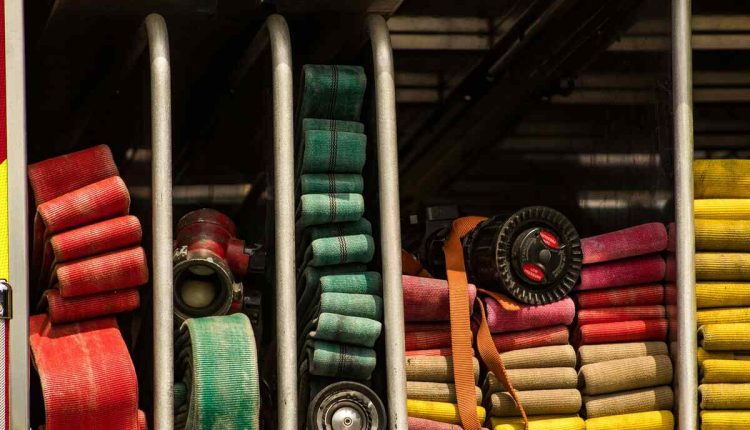PTFE is one of a class of chemicals known as perfluorinated alkylated substances (PFAS), such as PFOA and PFOS, that pose severe threats to human health. Due to their persistent nature and bioaccumulative nature, these PFAS chemicals remain present for long after initial exposure, staying harmful even years later and making removal even more complex. Learn the best info about High purity PFA slangen.
Cousins’ team suggests phasing out PFASs gradually over time, starting with nonessential uses and then transitioning progressively to critical products where suitable substitutes cannot be found.
PTFE is a fluoropolymer
PTFE (Polytetrafluoroethylene) is an innovative synthetic material composed of fluorinated tetrafluoroethylene that boasts multiple uses and applications but is most renowned for its non-stick surface. Furthermore, PTFE has become a favorite material choice for bushings and bearings, electrical insulation, and mechanical engineering applications due to its resistance to chemical attack and low coefficient of friction compared to any solid material.
PTFE differs from other chemicals in the PFAS family in that its chains consist of thousands of carbon atoms chained together into molecular chains, making it more stable and durable than its peers. Furthermore, its chemical resistance includes resistance against acids such as corrosives and alkalis, as well as being available in granular, fine powder, or water-based dispersion forms.
PTFE’s chemical structure is both complex and organized, which allows it to align itself with other molecules or portions of itself more readily. When this happens, the polymer forms what’s known as a crystalline region with high crystallinity that reduces melting points, viscosity, and tensile strength.
PTFE is typically produced via a paste extrusion process that blends it with hydrocarbon and then forms tubes, tapes, and wire insulation products. It may also be cast for thin films or fiber spun, boasts low friction properties, is inert to most acids and organic solvents, and has a low melting point that’s easy to clean.
PTFE is a PFAS
PTFE is composed of polytetrafluoroethylene (PFTE). This material offers excellent chemical and mechanical properties, such as low-temperature resistance, high electrical insulation properties including dielectric strength and dissipation factor, radiation resistance, radiation prevention properties, and the lowest coefficient of friction among solid materials. Furthermore, PTFE is nonflammable with minimal creep.
Although PFAS chemicals offer many advantages for human and environmental health, their presence remains problematic for both. Studies have linked PFAS chemicals with liver damage and thyroid disease, decreased fertility rates, developmental problems in infants and children, as well as persistent threats to water quality in the environment.
Related Posts
PFOA and PFNA PFASs, found in industrial waste, stain-resistant carpets, house dust, microwave popcorn bags, water supplies, and food, have been linked with human cancer in higher doses and persist in the environment for years before eventually building up in bodies of both animals and humans.
Some companies have limited PFAS use, while others continue to utilize it. A medical device known as a resorbable vascular guidewire coated with PTFE compound allows surgeons to perform delicate vascular procedures without using metal instruments that could damage patients’ tissues; it also enables physicians to move the guidewire with greater precision; this technique is essential when treating atherosclerosis-related artery blockages or narrowing.
PTFE is a lubricant
PTFE is an ideal material for lubricating metal and plastic surfaces, from coating frying pans to medical devices and electronics, and it helps reduce energy consumption and friction in machinery. Furthermore, its non-reactive nature and low melting point make PTFE suitable for creating seals and gaskets for sealing pipes or tanks that contain chemicals with corrosion or reactive properties – as well as numerous industrial or commercial uses, including pipe linings that contain toxic or reactive substances.
Granular and dispersion grades of PTFE are both available, with the former typically created through suspension polymerization before being compressed into rods or tubes for sintered processing. Dispersion grades, on the other hand, are made by mixing fine powder PTFE with solvents to form a paste that is extruded as films, wires, tubing, and fibers through paste extrusion. Dispersion grades have also been used to impregnate industrial fabrics and as a coating for cookware.
PTFE stands out among PFAS chemicals by being a fluoropolymer, meaning it contains thousands of carbon atoms linked together into molecular chains, unlike most PFAS, which only consist of seven to fourteen carbon atoms. When considering the safety of PTFE and other PFAS, it’s essential to keep in mind these distinctions when evaluating its safety; some, such as PFOA, have been linked with health concerns while other chemicals may still be suitable for use; it is also crucial to assess all stages of production as well as waste phases during its lifecycle before reaching any conclusions about its safety or otherwise.
PTFE is an adhesive
PTFE (Polytetrafluoroethylene) is widely recognized for its nonstick qualities, but this versatile plastic can also withstand extremely low and high temperatures as well as harsh chemicals while providing electrical insulation properties. Applications of PTFE include electrical components, high-lubricity mechanical parts, nonstick cookware, chemical processing equipment/tank liners, and medical devices – although it can even be blended with other plastics to enhance performance further.
PTFE molecules consist of carbon-carbon and carbon-fluorine bonds that cover entirely its backbone, rendering it highly resistant to corrosion. Furthermore, its coefficient of friction and dielectric strength are both very low; biocompatibility makes PTFE an attractive option. Unfortunately, however, under certain conditions – including exposure to alkali metals or chlorine trifluoride, which trigger a chemical reaction producing PFASs – its integrity can degrade over time.
PTFE can be challenging to bond, but recent advances in adhesive technologies have increased its utility for demanding applications. There are now low-odor primers that can be used with structural acrylic adhesives on PTFE surfaces; fluorocarbon etchants may make bonding more possible, but visual inspection of an etched surface alone cannot indicate its bondability – contact angle tests must instead be utilized as a gauge of this.


